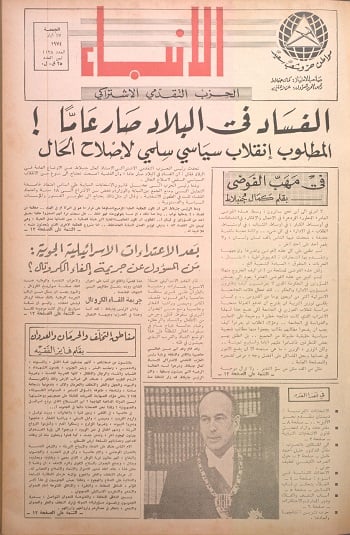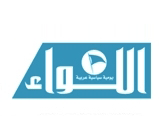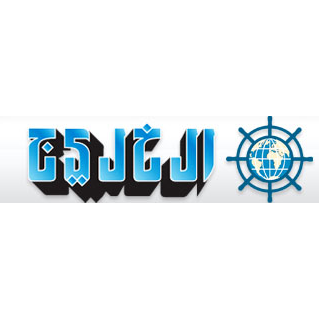Getting ISIS Out of Iraq
Robert A. Pape / New York Times
21 أبريل 2015

Despite being criticized for lacking a strategy, the United States and its allies have made significant gains against the Islamic State. Over the past year, the areas it controlled that were most threatening to our regional allies in Iraq and Syria have shrunk by more than a third. The Islamic State’s fighters have been pushed back from the Mosul Dam in Kurdish Iraq, the town of Kobani in Syria, and, most recently, the Iraqi city of Tikrit, making the largest Kurdish and Shiite population centers vastly safer.
After the Obama administration’s announcement of plans to retake Mosul, understanding what works in the fight against the Islamic State, also known as ISIS, is crucial. Many question whether the Mosul offensive is feasible. It is — but overall success against the Islamic State depends on the United States sticking to the strategy it has: the hammer and the anvil.
The air campaign has used this technique to force an invidious choice on the Islamic State: Either it must concentrate its forces to achieve local superiority over opposing ground troops but face being decimated by the “hammer” of American air power, or it can avoid airstrikes by dispersing its fighters into small units but risk being beaten on the “anvil” of its adversaries’ overwhelming ground forces. Either way, the Islamic State loses.
American air power has also bolstered morale and served as a force multiplier for local ground forces. But air power alone is reaching the limits of its capability.
The Islamic State has two main goals: expansion and consolidation. Since the air campaign started last August, it has succeeded in blocking expansion by the Islamic State, but it has barely made a dent in the jihadists’ defensive strategy of consolidating control in Sunni areas.
The United States can continue to use air power to limit the Islamic State’s ability to move large forces between Syria and Iraq, blunting further expansion. If the Islamic State is prevented from moving men and matériel in large concentrations, it will be unable to reinforce positions in Iraq.
Since last summer, however, the Islamic State has consolidated control over Sunni areas in Iraq and Syria, making gains — unhindered by the air campaign — in Hit, Ramadi, Raqqa and other areas deep in the Sunni heartland. Airstrikes in response, targeting Islamic State command-and-control structures and its revenue-generating oil operations, have failed to cause lasting damage.
Since 2006, the United States has killed the past three leaders of the Islamic State and its forerunners; each time, a new leader soon emerged. Unless the United States and its allies can take additional military action to exploit this disruption when it occurs, the Islamic State will quickly regroup, minimizing the effect of any “decapitation” strategy.
Defeating the Islamic State demands a new approach to retaking Sunni territory. First, we must identify and support pockets of Sunni resistance to the Islamic State. Here, any strategy that emphasizes Kurdish or Shiite-led Iraqi fighters is likely to fail. As we saw in Mosul and other Iraqi areas that fell quickly to the Islamic State, neither the Kurdish pesh merga nor the mainly Shiite Iraqi Army and Shiite militias (some with Iranian backing) are willing to pay the price of holding or retaking the largest Sunni-majority areas.
There are two obvious places to start. One is the Nineveh Province police force: When the Islamic State seized control of much of the province in June, this force numbered about 24,000 men but was immediately cut off from funding and weapons by a distrustful Shiite-dominated Iraqi government.
The other is the Sunni tribes that have opposed the Islamic State in Anbar Province. These include the Jaghaifi, near Haditha, and Albu Nimr, near Hit, hundreds of whom were brutally killed when the Islamic State sought to subdue them during its 2014 conquest.
Both these groups have the incentive and numbers to mount a serious challenge to Islamic State control of their territory, provided they get the support of American air power and special forces.
The brutal force used by the Islamic State over the last six months against not just Shiites but also some Sunni groups in its area of control has set the stage for a split in the Sunni community. Iraq is poised for such a “fratricidal flipping,” as my University of Chicago colleague Paul Staniland has described it.
Announcing the plan to retake Mosul later this year was a first step, but only action from the Iraqi government can fully mobilize the Sunnis. To this end, the United States needs to secure a power-sharing agreement between the Iraqi government and the Sunni tribes that would allow greater autonomy for Sunni provinces, like that granted to the Iraqi Kurds. It will be vital to eliminate Sunni fears that an Iraq rid of the Islamic State would simply return to Shiite domination; a guarantee of greater autonomy can persuade Sunnis to rebel against the Islamic State.
The Mosul announcement fits with the incremental hammer and anvil strategy. By taking the unusual step of going public about the planned offensive, a signal that help is on the way, the United States is aiming to give the Sunni tribes and former police forces clear encouragement to oppose the Islamic State in their areas.
Pragmatic and informed though it is, this plan to defeat the Islamic State by fostering Sunni resistance is far from simple. It requires brokering autonomy for Sunnis — arrangements that, to date, the government in Baghdad has been loath to accept. With that building block in place, American air power and special forces can combine with local allies genuinely motivated to push back the Islamic State. If the strategy succeeds, we could soon reach a tipping point for the Islamic State’s defeat in Iraq.
 عن أمل جنبلاط المتجدد: لبنان يستحق النضال
عن أمل جنبلاط المتجدد: لبنان يستحق النضال
 صحافيون أم عرّافون!
صحافيون أم عرّافون!
 ماذا يجري داخل أروقة بيت الكتائب المركزي؟
ماذا يجري داخل أروقة بيت الكتائب المركزي؟


 عن الخرائط التي تُرسم والإتفاقات التي تتساقط!
عن الخرائط التي تُرسم والإتفاقات التي تتساقط!
 “الإنحراف في الحياة”/ بقلم كمال جنبلاط
“الإنحراف في الحياة”/ بقلم كمال جنبلاط
 هاشتاغ #صار_الوقت يحل أولاً في حلقة جنبلاط
هاشتاغ #صار_الوقت يحل أولاً في حلقة جنبلاط
 طاولة نقاش عن أزمة الصحافة في جامعة AUST
طاولة نقاش عن أزمة الصحافة في جامعة AUST
 عبدالله: ليظهر لنا وزير مكافحة الفساد حرصه في صفقات البواخر والفيول
عبدالله: ليظهر لنا وزير مكافحة الفساد حرصه في صفقات البواخر والفيول
 عبدالله: غريب أمر وزارة مكافحة الفساد!
عبدالله: غريب أمر وزارة مكافحة الفساد!

 Comment to Uri Avnery: How Sad What Is Looming Ahead
Comment to Uri Avnery: How Sad What Is Looming Ahead
 “Not Enough!”
“Not Enough!”
 … لمن لم يقرأ يوسف البعيني/ بقلم وسام شيّا
… لمن لم يقرأ يوسف البعيني/ بقلم وسام شيّا
 كمال جنبلاط في مولده الأول بعد المائة: تعاليمه وأفكاره ما زالت الحلّ/بقلم عزيز المتني
كمال جنبلاط في مولده الأول بعد المائة: تعاليمه وأفكاره ما زالت الحلّ/بقلم عزيز المتني
 رئيس حزب/ وليس (… سابقاً)/ بقلم د. خليل احمد خليل
رئيس حزب/ وليس (… سابقاً)/ بقلم د. خليل احمد خليل
 التوازن السياسي في لبنان
التوازن السياسي في لبنان
 لبنان… مشاريع انقلابية مؤجلة
لبنان… مشاريع انقلابية مؤجلة
 جنبلاط وحَمَلة أختام الكاوتشوك
جنبلاط وحَمَلة أختام الكاوتشوك
 Le Liban est un symbole de tolérance
Le Liban est un symbole de tolérance
 Our Automated Future
Our Automated Future
 The True Origins of ISIS
The True Origins of ISIS
 Les Misérables vs. Macron
Les Misérables vs. Macron
 عذراً أيها المعلم/ بقلم مهج شعبان
عذراً أيها المعلم/ بقلم مهج شعبان
 رساله الى المعلم / بقلم ابو عاصم
رساله الى المعلم / بقلم ابو عاصم
 إلى روح القائد والمعلم كمال جنبلاط/ بقلم أنور الدبيسي
إلى روح القائد والمعلم كمال جنبلاط/ بقلم أنور الدبيسي
 أسرار وعناوين الصحف ليوم الجمعة 14 كانون الاول 2018
أسرار وعناوين الصحف ليوم الجمعة 14 كانون الاول 2018














